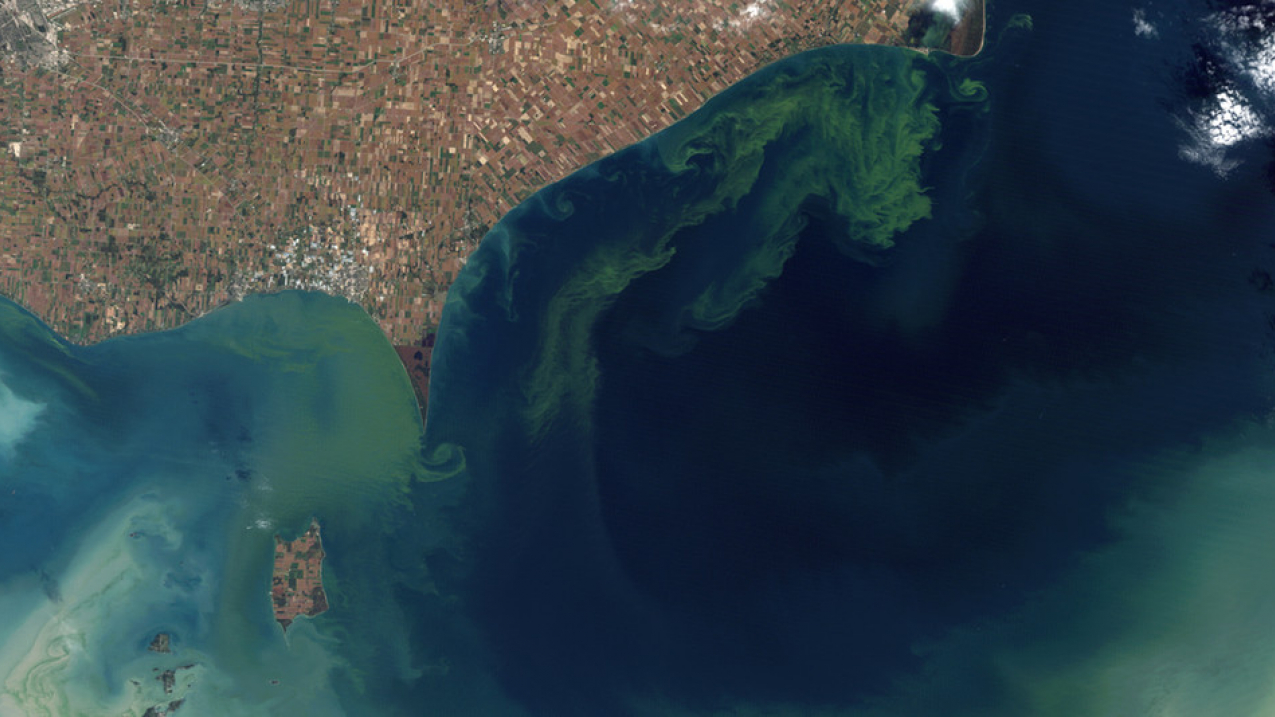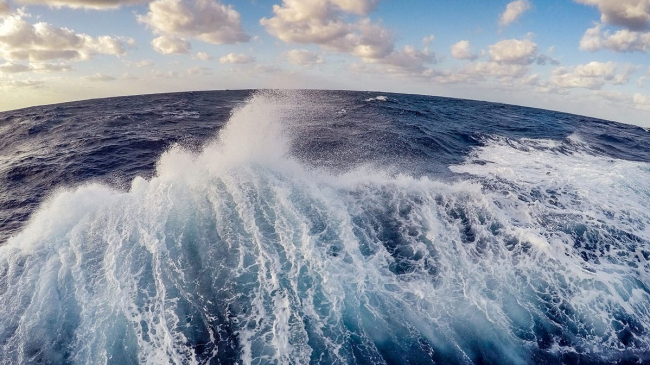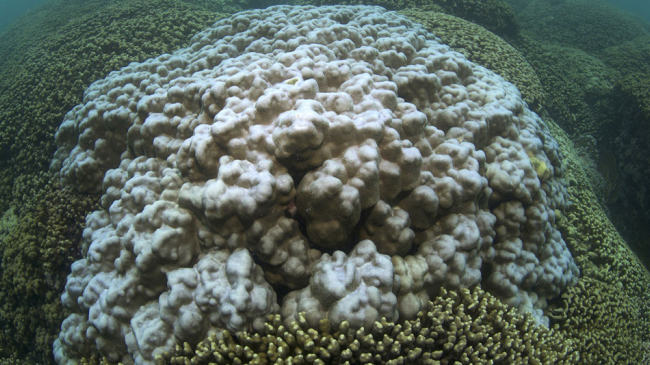
Satellite view of 2011 massive Lake Erie algal bloom, caused chiefly by phosphate runoff from agricultural fertilizer. (Image credit: NASA)
NOAA and 12 other federal agencies are working to improve research and communications about the risks of harmful algal blooms and hypoxia, twin threats to our nation’s waters.
While these dangers are different across the country, nearly every state is affected in some way. Algal blooms occur when colonies of microscopic algae—simple, plant-like organisms that live in the sea and freshwater—grow out of control. Some blooms can also be toxic, posing risks to human health, marine and freshwater resources, recreation and coastal economies.
Hypoxic areas--low-oxygen areas found in many lakes and bays where fish and other marine mammals cannot live--can be caused by nutrient runoff into rivers and streams that feed larger bodies of water. While found around the world, the Gulf of Mexico and Lake Erie are prime examples of where two U.S. hypoxic areas exist.
In this post for the White House Office of Science and Technology Policy, Russell Callender, assistant NOAA administrator for the National Ocean Service, along with colleagues from OSTP and the Environmental Protection Agency, explain more.



